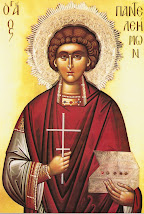In various traditions of architecture including Classical architecture, the capital (from the Latin caput, 'head') forms the crowning member of a column. In the Greek language the capital is called “kionokrano” (κιονόκρανο), meaning the helmet of the column.

The capital projects on each side as it rises, to support the abacus and unite the form of the latter (normally square) with the circular shaft of the column.

From the prominent position it occupies in all monumental buildings, the capital is often selected for ornamentation, and is often the clearest indicator of the architectural order.

We have now in our new Church some of the capitals that will be used to decorate the columns. They are made at the workshop of Mr. Christos Orthodoxou, a prominent member of our Church Committee, who is generously offering them for our new place of worship.

We are really grateful to him, as well as to his family, for all his hard work, his dedication and his kind contributions towards our Church and Community.
























































































